I: Blue Eyes
This is more of a personal journal/workshop to iron out things that need diversity. I am a bit of a minimalist when it comes to describing looks.
Since there is a photo limit, eye color will cover "9 chapters". 2 on blue, 3 on green, 1 brown, gray, puple, and "fantasy" apiece.
~~~~~~
Oh, look, it's everyone's favorite color. (Not mine, but people can be hot no matter whatever their eyes be.)
But after about the 3rd "Blue Eyes/Blue Orbs, I go a little bonkers. The colored part is an iris. You can use that word. There's also peepers, although that's more a dialect usage....outside of 🎵Jeepers, Creepers, where'd you get those peepers...🎶. Then there's oculi, eyeballs, globes, even optics. Personally wouldn't use the last one, even if the 1st defintion is eye in Merriam-Webster. Aperature is used for eyes, in the sense of a dialation, as pupils do. Windows to the soul. Keekers is the Scottish version of peepers. Lamps is really old slang for eyes. Ogglers is rarely used this way.
Hell, you could make up one, say....potato dents. (Don't tell me I need to explain this one...) It just has to make sense in the greater scheme of your writing.
So, let's break down what we are seeing, instead of just sticking with "Blue". Blue is good for when you've not stared into someone's soul, but only glimpsed them from across the room. What follows is very real eyes...as well as contacts, photography tricks, digital edits. That part I don't care much about, since I'm not writing an autobiography...but most the time, I will choose close to a normal color.
Color names come from 3 sources: my normal assumptions of color (not altered), those written like this are wikipedia's list of colors, as of June 2021, those written like this are stone associations.
1:
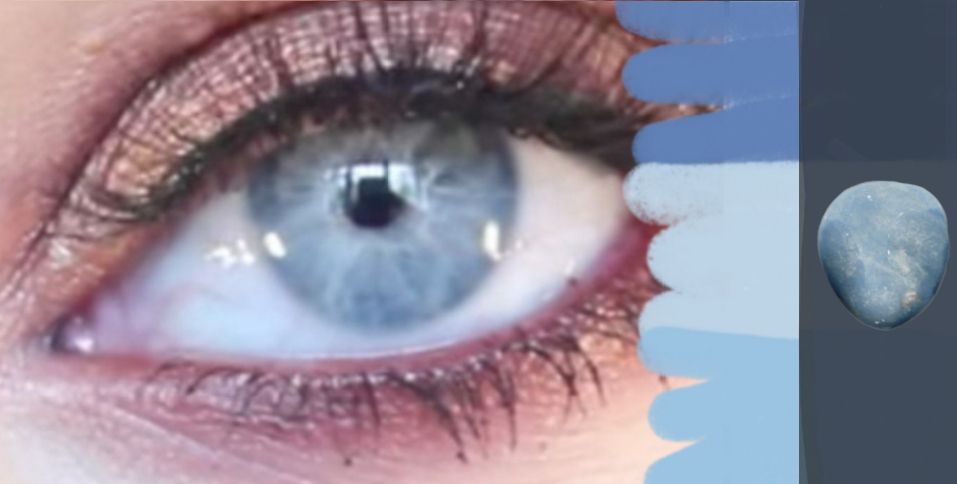
Light blue (glaucous). Wandering starburst frosted (pale aqua). Midtone is pale cerulean. Low shading variation. No rim, no color shift by pupil.
Angelite
2:

Light blue, a dull crystal. Dense, wide, fairly straight frosted strands over pale denim. Thin, old sliver pupil rim, pewter blue root. Modest denim outer rim. Has the same reflection quality of hard Christmas candies, reflecting an off green like nyanza.
Cats eye
3.
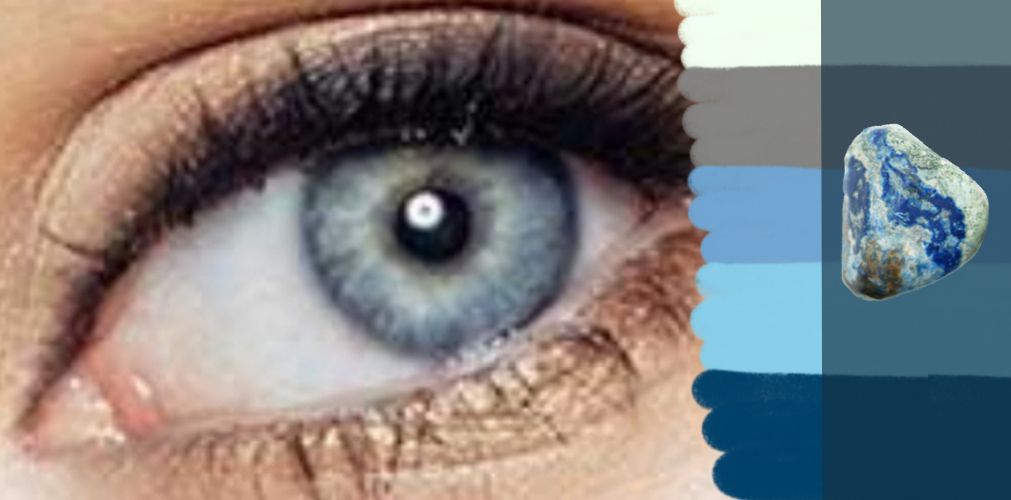
Light blue. Waved white (honeydew) barrier between battleship gray pupil ring and denim/frost (iceberg) starburst: midtone sky blue. Denim (indigo dye) outer ring.
Plancheite
4.
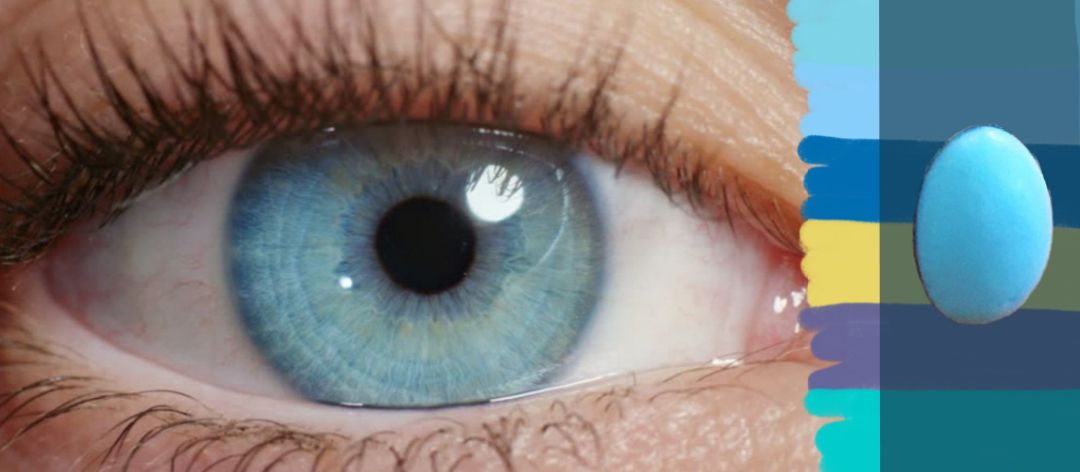
Middle blue, pretty close to a turquoise (light sky blue). Shade darker outer rim (Honolulu blue), what would be a frost wave is a very light green or even yellow (hansa yellow). Inner ring is a duller blue (dark blue-gray). Some wrinkling of the ripples increases the vibrancy up to robin egg blue.
Turquoise
5:
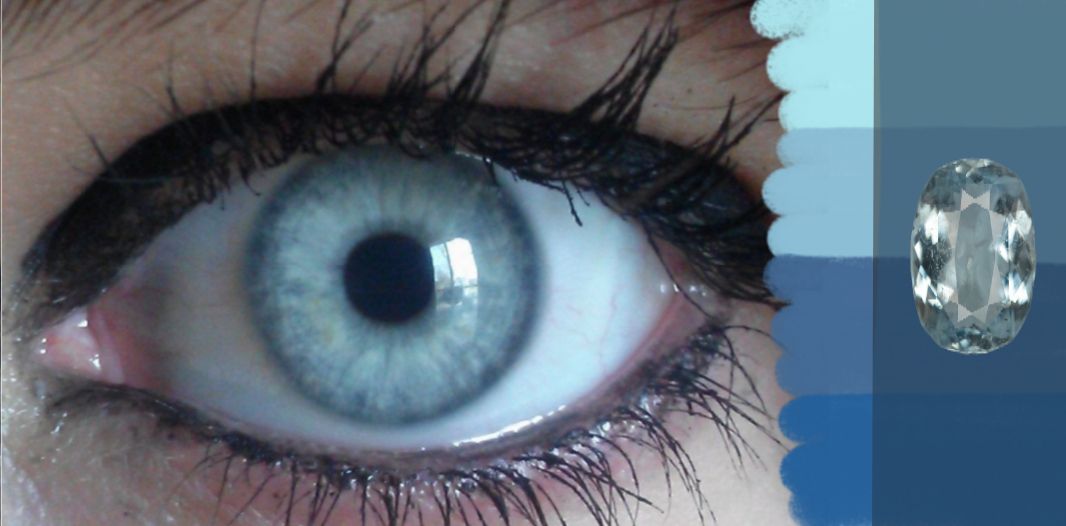
Light blue (hilight blizzard blue and dark sky blue, midtone and inner rim Queen blue). Lapis lazuli rim, mid color is close to #2, just as densely packed, but since the overall lighting is dimmer, it comes out slightly duller than #4, but around the same intensity. Inner rim light denim.
Aquamarine
6:
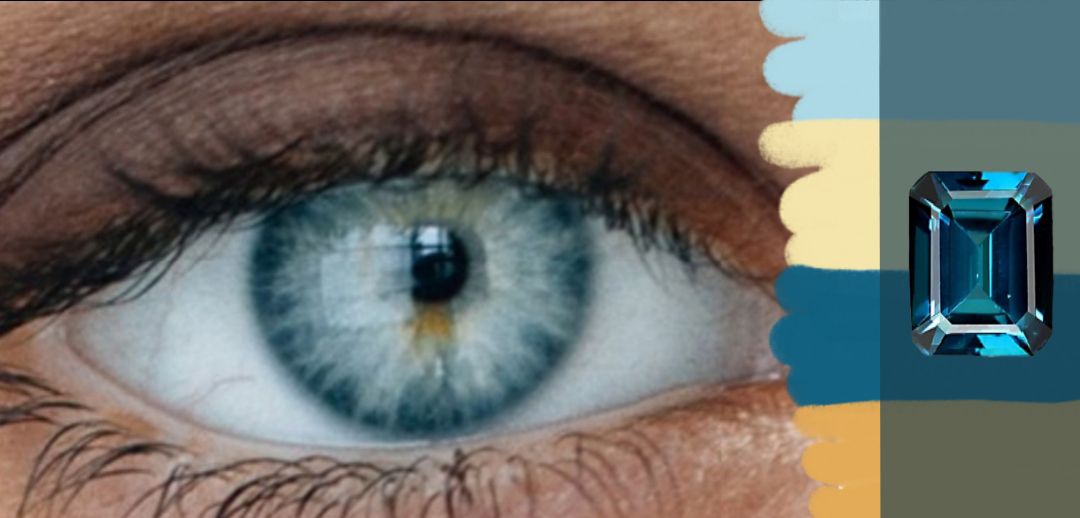
High contrast frost (light blue to medium champagne) over navy (blue sapphire). What would be an outer ring is destructured for the starburst affect. Denim inner ring, and a brown "soul patch" (almost sunray) under the pupil, which is most likely a reflection.
Blue topaz
7:
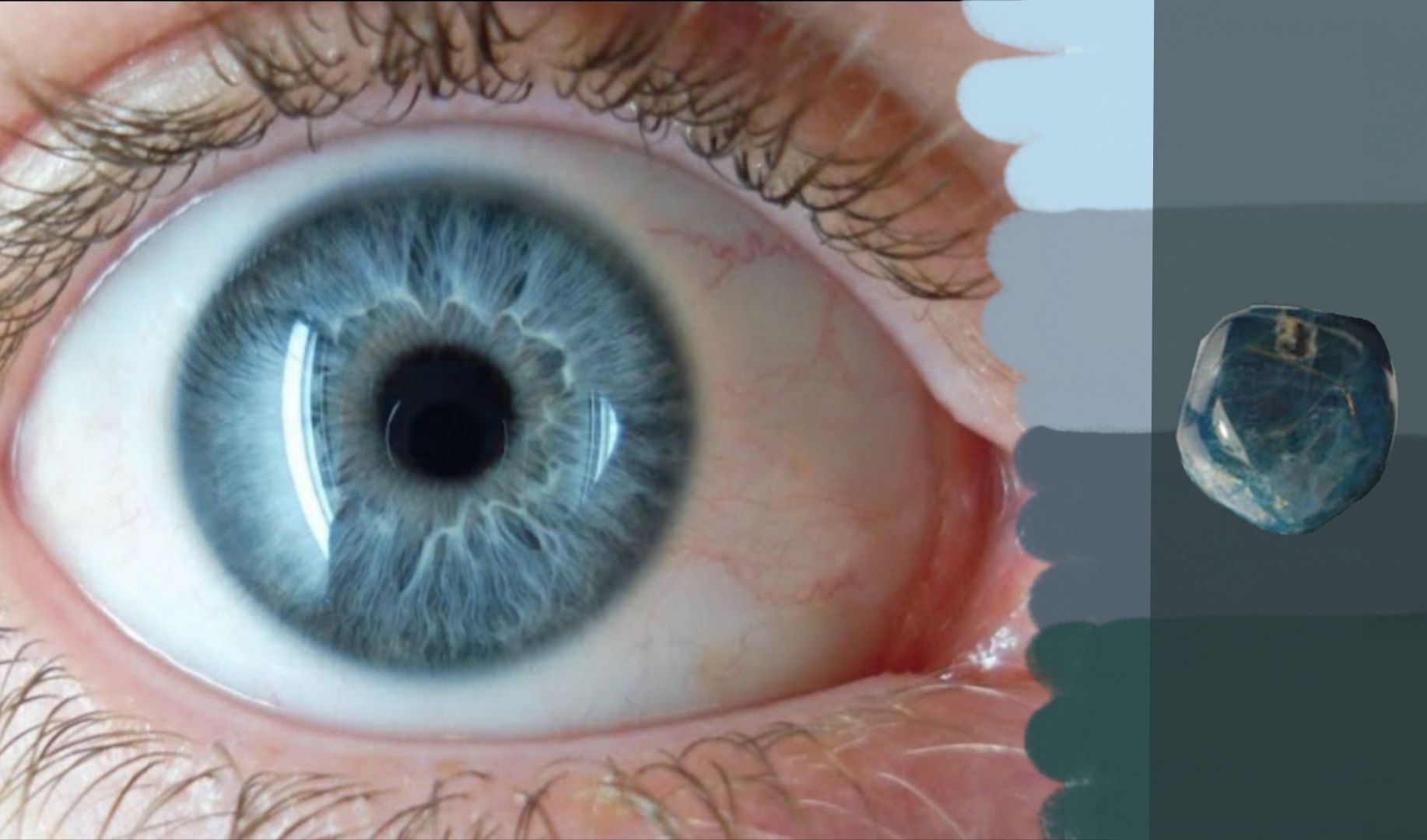
Medium dark blue. This eye gives the appearance of waves (Columbia blue) lapping over the edge of a sinkhole (cadet gray and black coral. There is a sense of depth between the wave and the pupil's rim. The outer rim's ring (dark slate grey) blends in with the base of the wave, giving another point of depth.
Apatite
8:

Navy (Oxford blue) and a dull frost (opal). Outer ring is darkest, and the waveform is close to the pupil (inner rim is Davy's gray). Midtone of slate gray This is actually Daniel Radcliffe's eye. His eyes are pretty close to monochromatic, but even then, you can still find bare hints of variation.
Blue spinel
9:
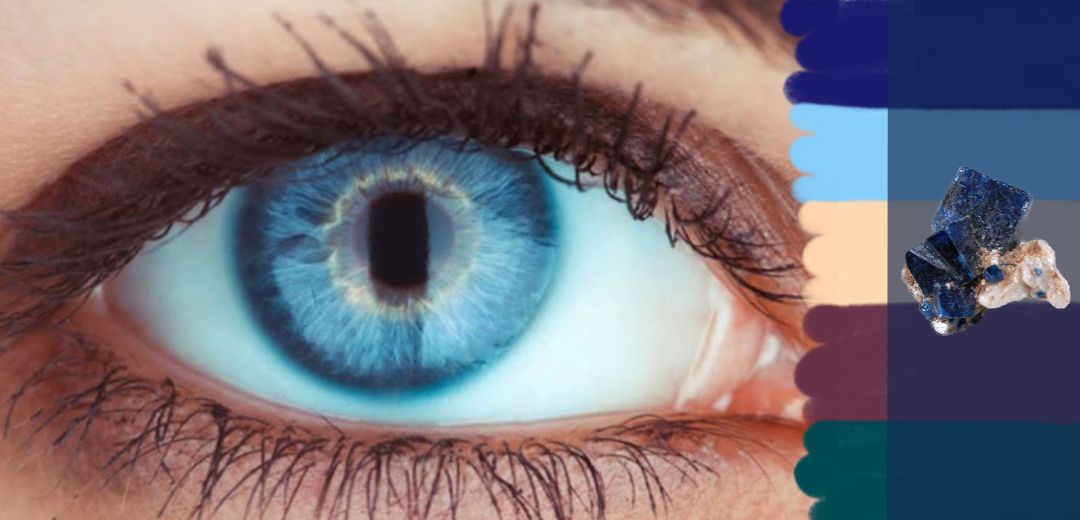
Vibrant medium-dark blue. Outer ring is almost cobalt (midnight blue, midnight green--color appearing last), just duller than electric blue for the striations (light sky blue). The waveform is likely just white but it's reflecting a faint orange fire back(light orange), while the inner ring is gray (wine dregs) in comparison.
Boleite
10:
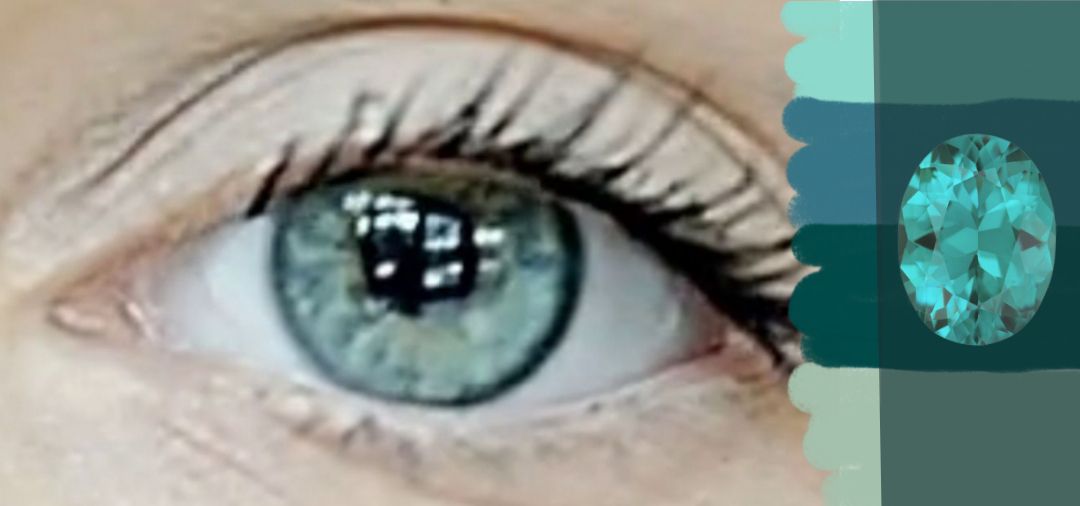
Medium seafoam (middle blue green highlights, teal blue midtones ). Teal outer ring (deep jungle green), the wave's edge is a pale olive (cambridge blue). This color is a transition between blue and green.
Teal Tourmaline
11:
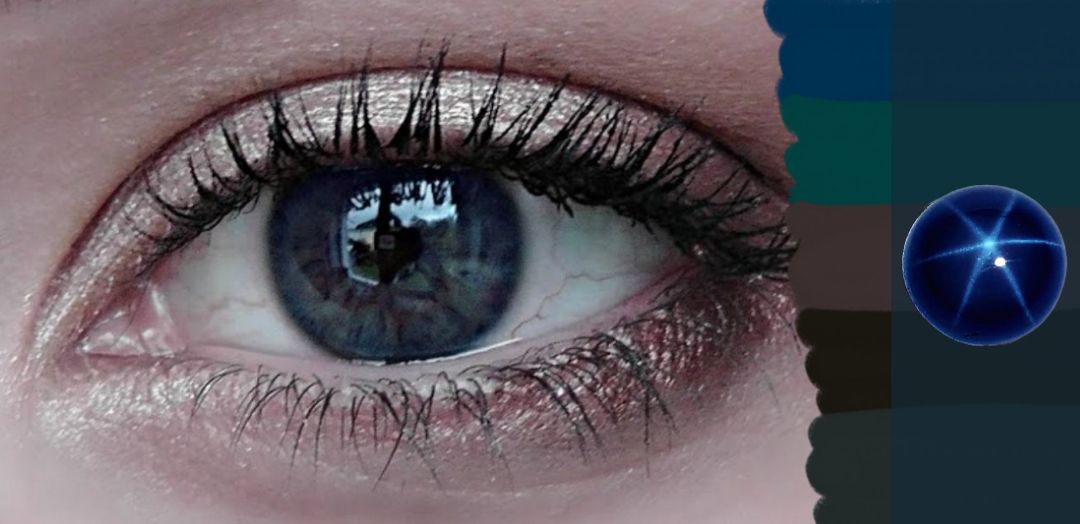
Very dark blue (Prussian blue). There is a faint wave, an even darker rim (by a single shade). It's not always easy to seperate the pupil from the iris, even with blues. When I pulled up at major zoom-in, warm black, black coffee, black chocolate, Charleston green, so there's more to a blue-black than merely being blue.
Star sapphire
12:
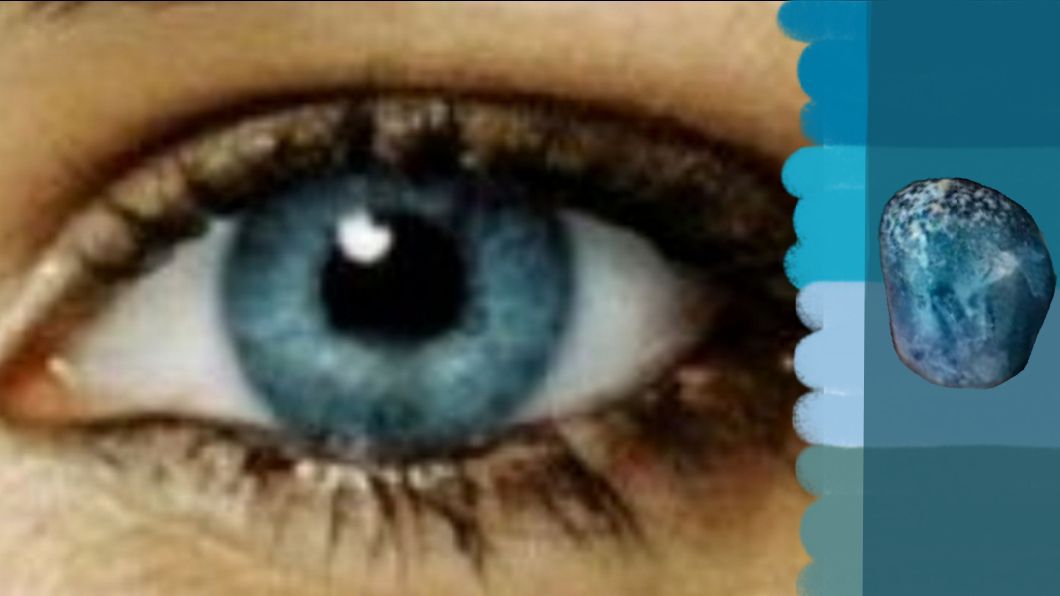
Middle blue, almost a dark seafoam (cerulean): the blue has a hint of green. Midtone of Pacific blue, highlight of pale cerulean. Inner rim is steel teal. Since it's not a high def pic, eye details are blurry, which is how it would look if you were too close to someone's face. It appears to have a few "freckles" of deeper blue.
Blue John
13:
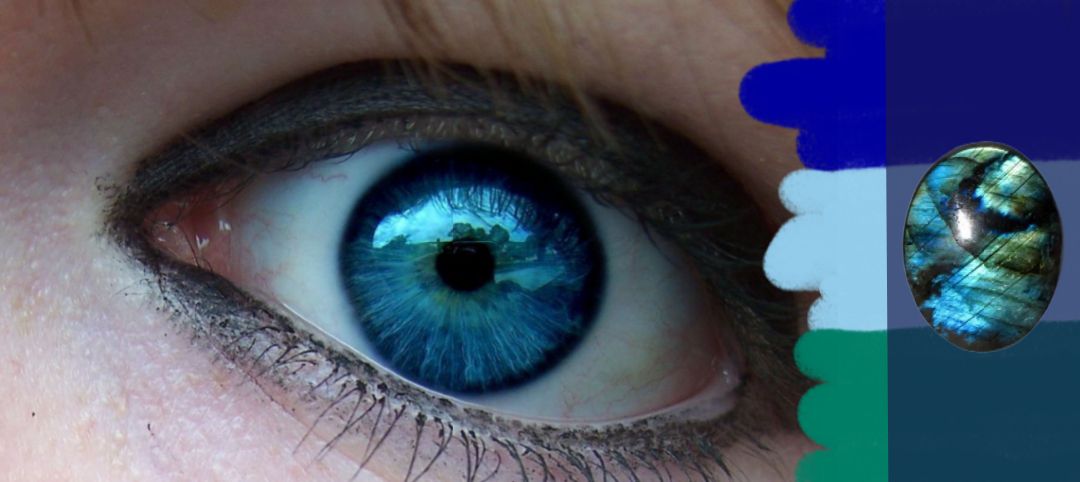
Vibrant dark blue (Duke blue, thin strands of light cornflower blue). Most the vibrancy is taken up in half-reflecting the scene the eye is witnessing. The grass and trees are generic viridian and actually may be the color closer to the pupil.
Spectrolite
14

Medium blue, homogeneous in hue. Silk-thin strands of striation, mimicking the gleam of metallic nail polish. A darker blue rim of varying thickness, a shade lighter (sapphire (crayola)) closer to the pupil. YlnMn blue, too. Almost midtone of cerulean frost, high of beau blue.
Blue Rutilated Quartz
15:
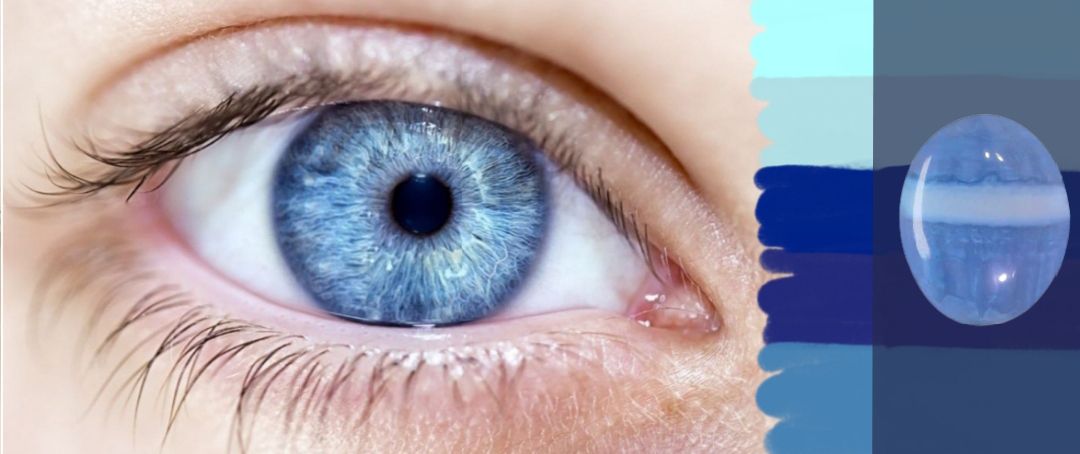
Frost (highlight Celeste, milder highlight powder blue)and Denim (resolution blue). Has the same metallic silk look of 14. Rim is close to cobalt (St. Patrick's blue) and inner rim is a hair less saturated (averaging steel blue). This has the appearance of eye freckles in 2 spots, but considering the number of strands bend or disappear there, it could be something else.
Blue Opal
16:

Another navy and frost starburst. This time the inner rim is a tan (fallow), almost the color of her eyeshadow, then comes gray and gray×11, then morning blue, then the warm black limbus. This is probably an indication of the hazel effect.
Gary Green Jasper
17:
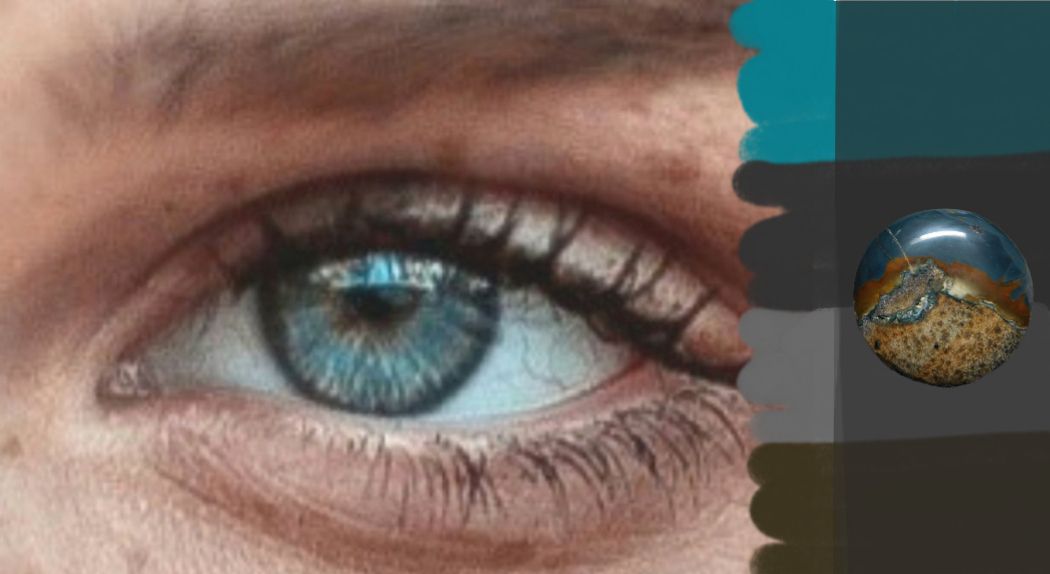
Medium blue (metallic seaweed). This is a particularly interesting eye: dark gray rim (jet), transitioning to a light gray (dark gray) or green, to a vibrant light blue to a green (olive drab #7) next to the pupil. The scene reflected on her iris arcs off the upper portion of the eye.
(Almost lost to the depths of time, I believe this one is Irnimite Blue Jasper.)
18:
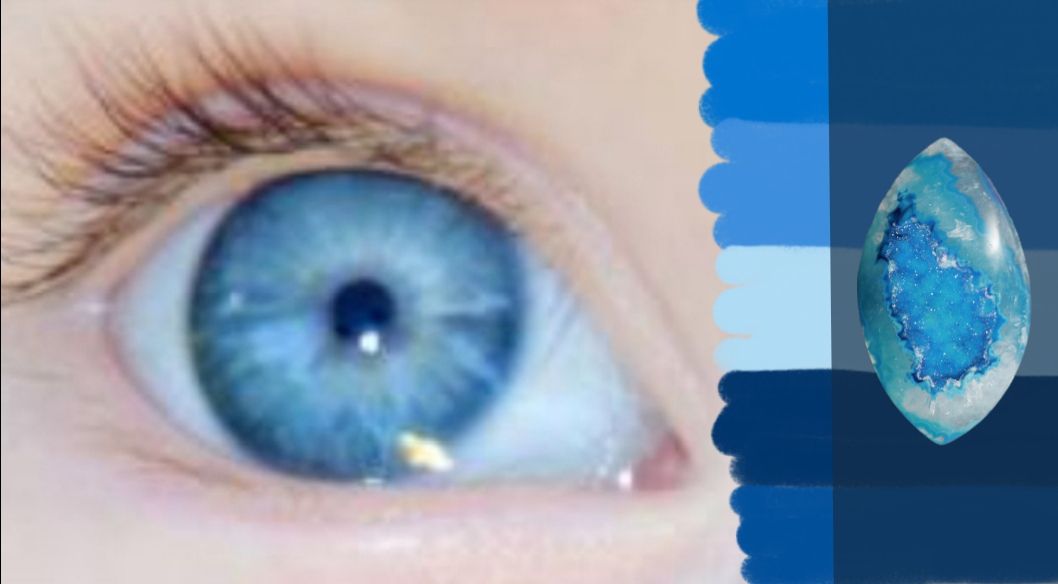
Baby blue. Yes, it's a denim and frost, but this is the default color of the newborn. Oh, if you use this color for your character, you can use Baby Blues, and it will automatically imply eyes without using the word. Midtones are true blue and tufts blue, highs of Uranian blue, rim Yale blue, lows USAFA blue.
Baby Blue Druzy Quartz
19:
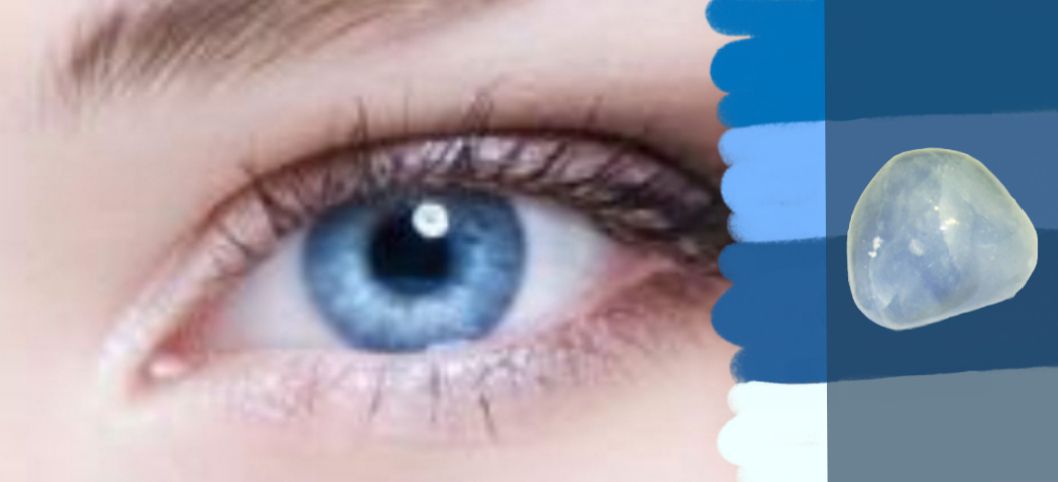
Frost and medium-Denim (French blue), in a hooded eye. Midrange is French sky blue. Barest rim of denim (green-blue) towards outer rim frost crests in wave near the pupil, rim of denim by pupil.
Notice that the frost is whitest (azure ×11) from the inner eye to a little over the halfway mark of the bottom lid. This is the affect of the brow ridge or orbital socket's protrusion above the outer side of the eye. It blocks light.
Baby Blue Calcite
20:

Had a spare space for an edit. If you're going to go for an edit, have some fun. Koi (cadmium orange, cadmium red)in a pond kind of look. Root is cosmic cobalt. Midtones are not quite ultramarine and ultramarine blue. High is closer to apricot.
Sunset Sodalite
Bạn đang đọc truyện trên: Truyen247.Pro